Transforming Workplace Culture Through Vision and Engagement

A strong company culture goes beyond perks and paychecks—it’s the backbone of a thriving, resilient business.
It shapes how decisions are made, how teams collaborate, and how employees find purpose in their work. Companies with a positive workplace culture are not only more likely to retain talent but also foster higher levels of employee engagement, boosting productivity and innovation.
Establishing a robust culture isn’t a one-off task; it’s an ongoing process. This guide will break down how values, vision, and engagement create the foundation for a culture that stands the test of time.
Whether you’re hiring for general labor jobs or filling executive roles, a strong culture ensures consistent growth and success.
The Role Values Play in Shaping Workplace Culture
Defining Your Core Values
Core values act as guiding principles for your company. They influence everything from decision-making to daily behavior and serve as the foundation of your workplace culture. Examples of strong company values include accountability, creativity, teamwork, and community involvement.
Having a clear set of core values communicates what truly matters to your organization. It’s vital to ensure these values are not just statements on a wall—they must be embodied in actions.
When companies align their practices with their values, employees feel a stronger connection to the mission.
Living Your Company Values
Living your values means reinforcing them in day-to-day workflows. For instance, if one of your values is innovation, encourage open brainstorming sessions and reward employees who propose creative solutions.
Similarly, for general labour jobs, values like teamwork and safety should be priorities that are explicitly supported through training and recognition programs.
Vision Alignment Drives Meaningful Engagement
Crafting a Magnetic Company Vision
Your vision statement defines where your company is headed. It’s the aspirational goal of anchoring your strategy and inspiring your workforce. A clear and compelling vision benefits all employees, whether they’re working on a factory floor or leading teams in an office.
Start by asking questions like, “What impact do we want to have?” or “How will the world benefit from our efforts?” Ensure your vision is ambitious yet achievable, giving employees a goal they’re eager to work toward.
Communicating Vision Effectively
A strong vision is only effective if communicated clearly. Leaders play a critical role in weaving the company vision into daily discussions, team meetings, and even task allocation.
Making it personal by highlighting how each employee contributes to achieving that vision fosters a collective sense of purpose.
Building Employee Engagement at All Levels
Why Employee Engagement is Non-Negotiable
Employee engagement is the emotional connection employees feel toward their workplace. High engagement translates into better performance, less turnover, and increased satisfaction. Addressing engagement isn’t just for large corporations.
Small businesses or companies filling general labor jobs also see measurable benefits when investing in this area.
Practical Strategies to Boost Engagement
- Empower Employees: Give team members autonomy in their roles, showing trust in their skills and decision-making.
- Celebrate Wins: Recognize achievements, big or small, through incentives or shout-outs during team meetings.
- Encourage Feedback: Provide platforms—whether one-on-one check-ins or anonymous surveys—to gather honest input from employees.
- Invest in Development: Offer opportunities for career growth, like skill-building workshops or mentorship programs.
Each of these strategies demonstrates to your team that their contributions are valued, further embedding them into your company’s ecosystem.
Reinforcing Culture Through Onboarding and Training
Cultivating Culture from Day One
Your onboarding process is often an employee’s first true glimpse into your workplace culture. From Day One, communicate your values and vision.
Highlight stories from your company history and use examples of how these principles are brought to life. For employees in general labor jobs, highlight how they fit into achieving broader organizational goals.
Ongoing Training for Cultural Alignment
Training programs should go beyond technical skills. Develop sessions that focus on problem-solving, collaboration, and leadership aligned with your values. Regular reiteration of your mission and purpose keeps the culture alive and evolving.
Balancing Structure and Flexibility in Organizational Design
Creating Frameworks that Support Culture
Building company culture doesn’t mean removing all structures. Instead, define processes that embed your values without micromanaging employees.
For example, performance metrics should consider not just results but also the method through which results are achieved (e.g., collaboration, innovation).
Flexing for Employee and Market Needs
A company culture that can adapt to the changing needs of employees and external markets is one that will thrive.
Whether it’s offering remote work options or improving safety guidelines in physical workspaces, businesses that listen and adapt to feedback are more likely to maintain employee satisfaction.
Leading By Example for Cultural Consistency
Leadership’s Role in Strengthening Culture
Leaders are the living embodiment of company culture. If the leadership team fails to align with company values, employees will notice—and morale may dip. Strong leaders model behavior, making values tangible through their actions.
For example, if transparency is a company value, leaders should openly share updates on business goals, challenges, and opportunities with their teams.
Incorporating Culture into Decision-Making
When leaders incorporate culture into decisions, they signal its importance to the organization. Whether it’s hiring employees based on cultural fit or choosing vendors that align with your mission, culture-focused decision-making elevates all aspects of the business.
Nurture Your Culture Today for Long-Term Success
A strong workplace culture is an ongoing project that requires attention and adaptation. When businesses prioritize their values, align with a clear vision, and engage employees at all levels, they position themselves for long-term success.
No matter the size of your organization—or whether you’re hiring for general labor jobs or high-level leadership roles—culture is the glue that binds everything together.
Fostering this glue doesn’t just improve employee satisfaction, it creates a dynamic environment ripe for innovation and growth. Start today by revisiting your values, refreshing your vision, and reinforcing employee engagement strategies to keep your workplace culture strong.




